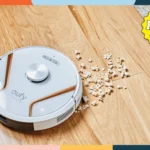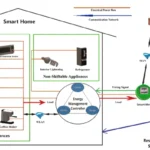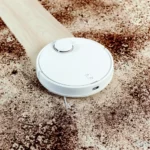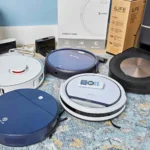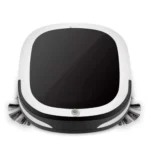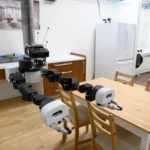Introduction
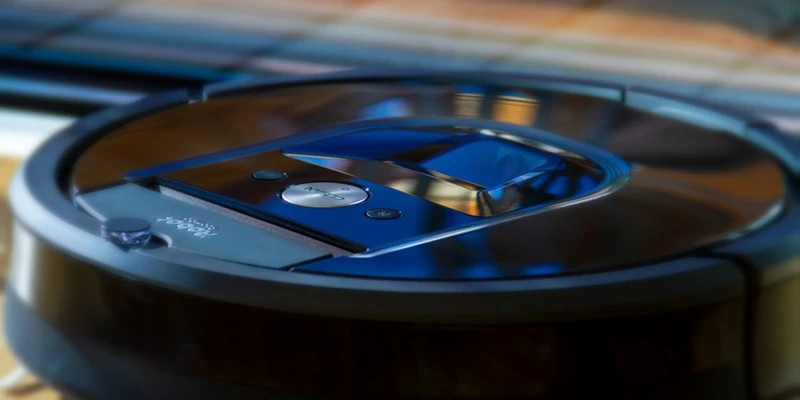
When it comes to keeping our homes clean, it’s important to find the most efficient and effective method. Two popular choices are the traditional vacuum cleaner and the newer robot vacuum cleaner. Both have their pros and cons, and making the right choice requires some research and evaluation of your household’s needs. In this article, we’ll explore the battle between these two cleaning options to help you decide which one is best for you. We’ll examine how they work, their advantages and disadvantages, and compare their efficiency, noise level and energy consumption, and cleaning power and performance. Finally, we’ll go over some factors to consider before making a purchase, and highlight some popular models in both categories. So let’s dive in and see which type of vacuum cleaner comes out on top.
Explanation of the article
The purpose of this article is to provide a comprehensive comparison of robot vacuum cleaners and traditional vacuum cleaners. The article explores the work mechanisms, pros and cons of each type of vacuum cleaner, their cleaning efficiency, noise level, energy consumption, cleaning power, and performance. It highlights some of the factors to consider when choosing a vacuum cleaner such as household size, cleaning needs, and price. The article further discusses some popular robot vacuum cleaners and traditional vacuum cleaners in the market and their unique features. Ultimately, the article will summarize the key differences between robot vacuum cleaners and traditional vacuum cleaners, help readers choose the right vacuum cleaner that caters to their needs, and provide a final verdict on which type of vacuum cleaner is more efficient. For more information on robot vacuum cleaners, traditional vacuum cleaners, and their comparison, visit /ultimate-robot-vs-vacuum/. Pros and cons of each type of vacuum cleaner are discussed thoroughly in /pros-cons-robot-traditional-vacuums/, while /choosing-robot-vacuum/ provides valuable insights on choosing the best robot vacuum cleaner in the market.
The importance of efficient cleaning
Efficient cleaning is crucial to a healthy and comfortable living environment. Poor cleaning practices can lead to the breeding of harmful bacteria and pests, causing allergies and illness. It is essential to choose the right vacuum cleaner that will effectively clean your home or office. The efficiency of a vacuum cleaner is determined by its ability to remove dust, dirt, and debris from different surfaces.
| Importance of Efficient Cleaning |
|---|
| Health Benefits Efficient cleaning practices help reduce allergens and dust mites in your living environment, leading to a healthy and hygienic home. |
| Saves Time and Effort Efficient vacuum cleaners do the job quickly and efficiently, making your cleaning task easy and hassle-free, saving you time and effort. |
| Cost-Effective Choosing an efficient vacuum cleaner reduces the need for deep cleaning services, saving you money in the long run. |
| Improves Air Quality Efficient vacuum cleaners help remove dust and dirt from your living environment, leading to clean indoor air and improved air quality. |
It’s important to note that both robot vacuum cleaners and traditional vacuum cleaners can be efficient, but their performance and functionality differ. In the following sections, we will discuss how these two types of vacuum cleaners work and compare them based on factors like efficiency, noise, and cleaning power. We will also provide factors to consider before purchasing a vacuum cleaner and recommend popular models of both robot and traditional vacuum cleaners. Check out our robot vs traditional vacuum comparison for a comprehensive breakdown.
What are Robot Vacuum Cleaners?
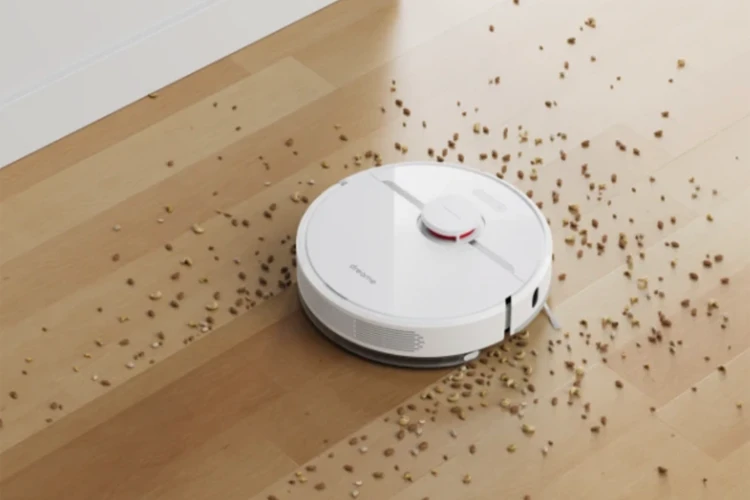
When it comes to cleaning, we’re always looking for innovative ways to make it more efficient and less time-consuming. One such invention is the robot vacuum cleaner– a device that takes the hassle out of cleaning floors. These high-tech gadgets have become increasingly popular in recent years, with their sales skyrocketing. If you’re curious to know more about what robot vacuum cleaners are and how they work, keep reading.
How robot vacuum cleaners work
Robot vacuum cleaners are a smart and efficient way to clean your home, without requiring much manual effort. These devices operate using an intricate system of sensors and algorithms that enable them to seamlessly navigate around your home and clean those hard-to-reach spots.
The following table summarises the key components and processes involved in a typical robot vacuum cleaner:
| Component/Process | Description |
|---|---|
| Sensors | Robot vacuum cleaners use a combination of infrared, ultrasonic, and optical sensors to detect and navigate obstacles in their path. They also use cliff sensors to avoid falling down stairs or other drops. |
| Algorithms | Robot vacuum cleaners use complex algorithms to map the layout of your home, calculate the most efficient cleaning path, and adjust their movements accordingly. Some models also come equipped with machine learning capabilities, which allow them to learn and adapt to your home’s layout as they go. |
| Brushes | Robot vacuum cleaners typically come equipped with at least one brush, which helps to pick up dirt and debris from carpets and hard flooring. Some models may feature a combination of brushes for more efficient cleaning. |
| Vacuum | Robot vacuum cleaners use a small but powerful vacuum motor to suck up dirt and debris into a dustbin or bag. The suction power of a robot vacuum tends to be lower than that of a traditional vacuum cleaner, but they compensate for this with their ability to clean more frequently. |
| Battery | Robot vacuum cleaners are powered by rechargeable lithium-ion batteries, which provide enough juice for up to 90 minutes of cleaning time. The batteries typically take several hours to recharge. |
| Charging station | When the battery of a robot vacuum cleaner starts to run low, it will automatically return to its charging station to recharge. Some models may also feature robust navigation capabilities that allow them to return to the exact spot where they left off once their battery is fully charged. |
Robot vacuum cleaners are made up of several sophisticated components that work together to provide efficient and automated cleaning in your home. With their advanced sensors and algorithms, these devices are able to navigate around obstacles and clean even the most hard-to-reach areas of your home.
Pros and cons of robot vacuum cleaners
Robot vacuum cleaners have been around for over two decades now and have become increasingly popular in recent years. They come with a range of benefits and downsides that you may want to consider before purchasing one. Let’s take a closer look at the “Pros and Cons of Robot Vacuum Cleaners”.
| Pros | Cons |
|---|---|
| Convenience: Unlike traditional vacuum cleaners, robot vacuums operate independently and require less physical effort on your part. | Noisy: Even though their noise is lesser than traditional vacuums, some robot vacuums can still be quite noisy and cause disruptions. |
| Efficiency: Robot vacuums can clean up dirt, dust, and debris that are hard to reach, making their cleaning efficiency higher than traditional vacuums in some cases. | Cost: Robot vacuums cost more upfront than traditional vacuums despite their smaller size. |
| Aesthetically Pleasing: With their sleek designs and minimalistic appearance, robot vacuums can enhance the look of your home. | Less Customizability: Robot vacuums have a fixed cleaning pattern and lack versatility in terms of cleaning settings. |
| Innovative Features: Robot vacuums come with impressive features like programming, auto-recharging, and mapping, which can simplify cleaning chores significantly. | Not Suitable For All Surfaces: Robot vacuum cleaners may struggle to clean certain surfaces like carpets with long hairs or shags. |
| Saves Time: Because the robot vacuum can clean independently, it saves you time to focus on other tasks. | Size: Robot vacuum cleaners have a smaller capacity and require more frequent emptying than traditional vacuums. |
As we can see from the table above, robot vacuum cleaners come with several advantages, such as convenience, efficiency, aesthetic appeal, innovative features, and time-saving capabilities. However, they also have a few disadvantages, including noise, cost, lack of customizability, limitations on surfaces, and a smaller size. Before deciding to purchase a robot vacuum cleaner, it’s essential to evaluate these pros and cons and determine if it fits your needs and lifestyle.
What are Traditional Vacuum Cleaners?
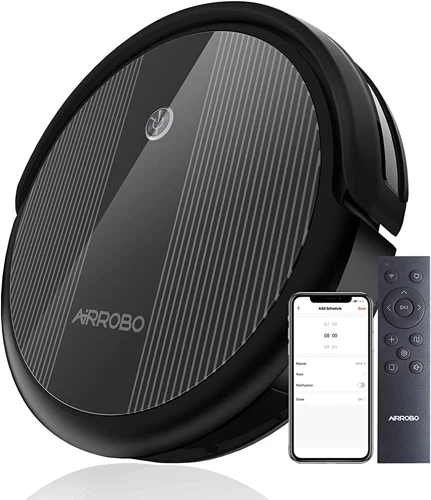
When we think of vacuum cleaners, the image of the traditional upright vacuum often comes to mind. These types of vacuums have been a mainstay in households for years, and for good reason. They offer powerful suction and a thorough clean that leaves carpets and floors looking spotless. However, with the rise of innovative technology, traditional vacuum cleaners face stiff competition from newer, more efficient alternatives. Let’s take a closer look at what makes traditional vacuum cleaners stand out and what drawbacks they may have.
How traditional vacuum cleaners work
Traditional vacuum cleaners work by using a combination of suction and agitation to remove dirt and debris from floors and carpets. Here’s the step-by-step process of how they work:
Step 1: The vacuum cleaner draws air in through the nozzle, which contains a rotating brush or beater bar that agitates the carpet fibers and dislodges dirt and debris.
Step 2: The air and dirt are then drawn through the hose and into the main body of the vacuum cleaner, where a series of filters remove the dirt and dust particles from the air, trapping it in the dustbin or bag.
Step 3: The air is then expelled through a vent, often located on the back of the vacuum cleaner.
Step 4: Some traditional vacuum cleaners also have attachments, such as crevice tools and upholstery brushes, that can be used to clean in hard-to-reach areas or on different surfaces.
Traditional vacuum cleaners rely on the strength of their suction and the agitation of the brush or beater bar to effectively clean floors and carpets. However, this method can also kick up dust and allergens into the air, potentially making it harder to breathe for those with allergies or respiratory issues. Additionally, traditional vacuum cleaners can be heavy and bulky to maneuver around tight spaces or up and down stairs.
Pros and cons of traditional vacuum cleaners
Pros of Traditional Vacuum Cleaners:
- Powerful Cleaning: Traditional vacuum cleaners are known for their powerful suction that can pick up dirt and debris from carpets and other surfaces.
- Versatility: Traditional vacuum cleaners come in various forms such as handheld, stick, and canister, making them versatile for different cleaning needs.
- Budget-Friendly: Traditional vacuum cleaners are often more budget-friendly than robot vacuums, which can be a deciding factor for many consumers.
- Large Dustbin: Traditional vacuum cleaners generally have a larger dustbin or bag capacity than robot vacuums, which means less frequent emptying.
Cons of Traditional Vacuum Cleaners:
- Bulky and Heavy: Traditional vacuum cleaners can be challenging to maneuver around furniture and tough to carry up and down stairs due to their size and weight.
- Noisy Operation: Traditional vacuum cleaners tend to be louder than robot vacuums, which can be disruptive to household members.
- Requires Manual Effort: Operating traditional vacuum cleaners require manual effort, which can be time-consuming and tiring, especially for larger households or multiple floors.
- Limited Smart Features: Traditional vacuum cleaners typically lack the advanced smart features that robot vacuums offer, such as automatic scheduling and Wi-Fi connectivity.
Comparison: Robot Vacuum Cleaners vs Traditional Vacuum Cleaners
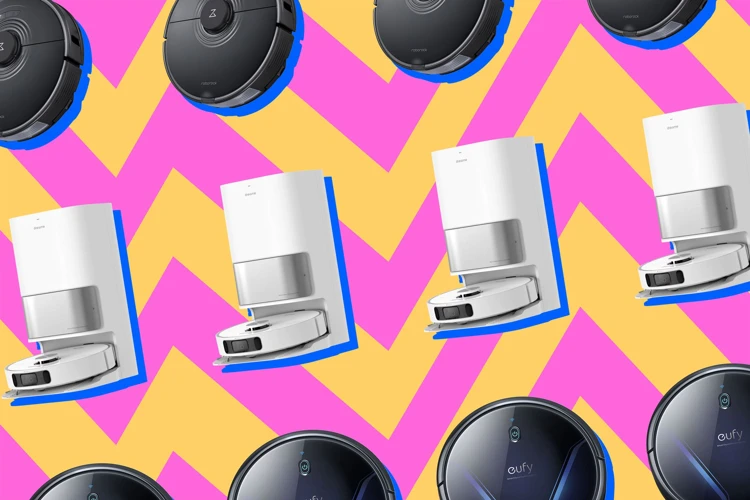
When it comes to household cleaning, vacuum cleaners have become a quintessential tool for keeping homes free of dust, dirt, and debris. With technological advancements, two types of vacuum cleaners have emerged as the go-to options in the market: robot vacuum cleaners and traditional vacuum cleaners. These two types of vacuum cleaners come with their own sets of features, advantages, and disadvantages. In this section of the article, we will compare the efficiency of these two types of vacuum cleaners based on their cleaning performance, noise level and energy consumption, as well as their cleaning power and overall effectiveness. Let’s delve into the details and see which vacuum cleaner comes out on top.
Cleaning Efficiency
When it comes to cleaning efficiency, both robot vacuum cleaners and traditional vacuum cleaners have their pros and cons. Let’s take a closer look at how they compare in this aspect.
Robot Vacuum Cleaners are designed to clean efficiently and thoroughly, and they do so with minimal human intervention. They use advanced sensors and smart mapping technology to navigate around obstacles and map out the best cleaning path for the room. This leads to effective cleaning of most surfaces, including carpets, hardwood floors, and tiles.
Traditional vacuum cleaners, on the other hand, require more physical effort as they have to be manually moved around the room. They offer powerful suction and deep cleaning capabilities that can remove stubborn dirt and debris from carpets and upholstery. However, their cleaning efficiency largely depends on the user’s technique, and it may take more time and effort to cover the entire area.
To make it easier to compare the cleaning efficiency of robot vacuum cleaners and traditional vacuum cleaners, let’s summarize their main features in a table:
| Robot Vacuum Cleaners | Traditional Vacuum Cleaners | |
|---|---|---|
| Cleaning method | Automated with smart mapping technology | Manual movement by the user |
| Surface coverage | Covers most surfaces effectively | Effective for deep cleaning carpets and upholstery |
| Effort required | Minimal human intervention | Requires more physical effort |
While traditional vacuum cleaners have a reputation for being powerful and effective at deep cleaning, robot vacuum cleaners can perform well on most surfaces with minimal human intervention. When it comes to cleaning efficiency, it ultimately depends on your specific needs and preferences.
Noise level and energy consumption
When it comes to choosing between robot vacuum cleaners and traditional vacuum cleaners, noise level and energy consumption are important factors to consider. Let’s take a look at how these two types of vacuums compare in this regard.
| Noise level | Energy consumption | |
|---|---|---|
| Robot vacuum cleaners | Robot vacuum cleaners are generally quieter than traditional vacuum cleaners. Their noise level ranges from 45 to 65 decibels, which is about the same as a normal conversation. | Robot vacuum cleaners are more energy-efficient than traditional vacuum cleaners. They consume less power because of their smaller size and shorter operation time. Most robot vacuum cleaners use between 20 and 40 watts of power. |
| Traditional vacuum cleaners | Traditional vacuum cleaners are generally louder than robot vacuum cleaners. Their noise level ranges from 70 to 90 decibels, which is about the same as a lawnmower or a motorcycle. This can be a problem if you want to vacuum while other people are sleeping, or if you have a baby or a pet that is sensitive to loud noises. | Traditional vacuum cleaners are less energy-efficient than robot vacuum cleaners. They consume more power because of their larger size and longer operation time. Most traditional vacuum cleaners use between 800 and 2000 watts of power. |
As you can see, robot vacuum cleaners are more energy-efficient and quieter than traditional vacuum cleaners. This makes them a better choice if you want to save on your energy bill and reduce noise pollution in your home. However, if you have a large home or if you need to deep-clean carpets, a traditional vacuum cleaner might be a better option despite its higher noise level and energy consumption. Ultimately, your choice will depend on your specific cleaning needs and the features that are most important to you.
Cleaning power and performance
When it comes to cleaning power and performance, both robot vacuum cleaners and traditional vacuum cleaners have their pros and cons.
Robot vacuum cleaners typically have lower suction power compared to traditional vacuum cleaners. However, they make up for it with their ability to clean more frequently, targeting hard-to-reach areas that traditional vacuum cleaners may miss.
On the other hand, traditional vacuum cleaners have more suction power, making them better for deep cleaning tasks. They also usually have larger dust bins and can handle larger debris than robot vacuum cleaners.
To compare cleaning power and performance of robot vacuum cleaners and traditional vacuum cleaners, we’ve created a table below:
| Robot Vacuum Cleaners | Traditional Vacuum Cleaners | |
|---|---|---|
| Cleaning Power | Lower suction power compared to traditional vacuum cleaners, but can clean more frequently | More suction power, better for deep cleaning tasks |
| Performance | Cleans hard-to-reach areas and can be programmed to clean automatically, but may miss larger debris | Better at cleaning larger debris and deep cleaning tasks, but harder to maneuver in tight spaces and may require more effort to use manually |
It ultimately comes down to individual preference and cleaning needs when deciding between a robot vacuum cleaner and a traditional vacuum cleaner. If you prioritize convenience and frequent cleaning, a robot vacuum cleaner may be the better option. But if you require deep cleaning and have a larger household with more debris, a traditional vacuum cleaner may be more suitable for your needs.
Factors to Consider before Choosing a Vacuum Cleaner
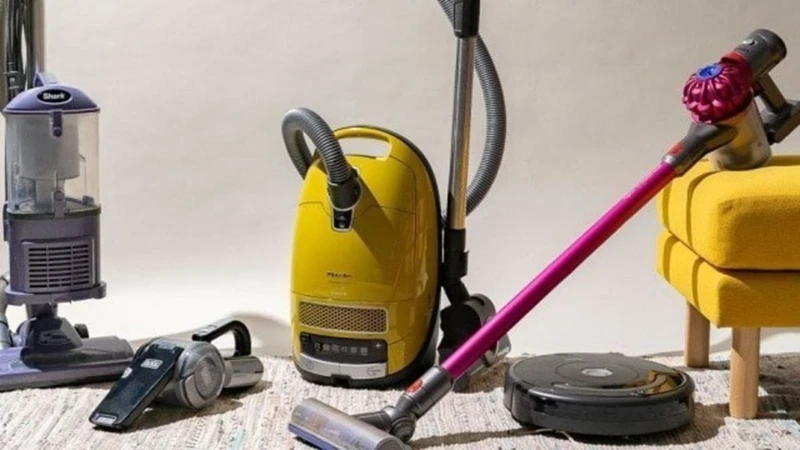
When it comes to choosing the right vacuum cleaner for your home, there are several factors to take into consideration. Household size and family members, cleaning needs and surfaces, as well as price and maintenance are all important aspects to think about before making a purchase. With so many options available, it can be overwhelming to decide which vacuum cleaner is the best fit for you and your family’s needs. Let’s take a closer look at these factors and what you should consider when choosing a vacuum cleaner.
Household Size and Family Members
When it comes to choosing between robot vacuum cleaners and traditional vacuum cleaners, one of the most important factors to consider is the size of your household and the number of family members living in it. Let’s take a closer look at how this can impact your decision:
Household Size: If you live in a small apartment or a studio, a robot vacuum cleaner could be a great option for you. They are designed to navigate through small spaces and can easily fit under furniture, making cleaning a breeze. However, if you have a larger home with multiple rooms and carpeted areas, a traditional vacuum cleaner may be more efficient in keeping your home clean.
Family Members: The number of family members in your household can also play a role in your decision. If you have pets or young children who tend to make messes, a traditional vacuum cleaner with a powerful motor and multiple attachments may be more capable of tackling tough dirt and debris. However, if you have older family members or those with physical limitations who may struggle with using a traditional vacuum, a robot vacuum cleaner may be a more convenient option.
| Robot Vacuum Cleaners | Traditional Vacuum Cleaners | |
|---|---|---|
| Small Household or Apartment | Efficient and can navigate small spaces | May be too bulky for small spaces |
| Large Household or Multi-Room House | May not be as efficient in larger spaces | Can be more efficient with attachments and larger motors |
| Families with Children or Pets | May not be as powerful for tough messes | Offers more power and versatility for tough messes |
| Families with Elderly or Disabled Members | Convenient and easy to use | May require more physical effort to use effectively |
As you can see, there are multiple factors to take into account when considering household size and family members. Ultimately, your personal situation and preferences will guide your decision on which type of vacuum cleaner will work best for you.
Cleaning Needs and Surfaces
When it comes to choosing a vacuum cleaner, it is essential to consider your cleaning needs and the types of surfaces you will be cleaning. Robot vacuum cleaners and traditional vacuum cleaners have different features and capacities that make them better suited for various cleaning tasks.
Cleaning Needs:
Robot vacuum cleaners are best suited for daily, light cleaning needs. They are designed to pick up dust, pet hair, and debris on hard floors and low-pile carpets. If you have pets that shed frequently, robot vacuum cleaners with high suction power and a HEPA filter will be most effective. Traditional vacuum cleaners, on the other hand, are better suited for deep cleaning tasks. They are designed to tackle embedded dirt and hair on high-pile carpets and rugs, making them more effective for heavy-duty cleaning tasks.
Surfaces:
When it comes to surfaces, robot vacuum cleaners are best suited for hard floors such as tile or hardwood. They can easily navigate around furniture, stairs, and other obstacles. However, they may struggle on high-pile carpets where the suction power is not strong enough to extract dirt and debris. In contrast, traditional vacuum cleaners work well on all surfaces, including high-pile carpets, rugs, and upholstery. They come with different brush heads and attachments to help reach every nook and cranny of your home.
To help you understand which type of vacuum cleaner is best suited for your needs, take a look at this comparison table:
| Robot Vacuum Cleaner | Traditional Vacuum Cleaner | ||
|---|---|---|---|
| Cleaning Needs | Light Cleaning | Deep Cleaning | |
| Surfaces | Hard Floors, Low-Pile Carpets | All Surfaces, including High-Pile Carpets, Rugs, and Upholstery |
Consider your cleaning needs and surface types before deciding which type of vacuum cleaner to purchase. If you have pets that shed frequently or high-pile carpets that require deep cleaning, a traditional vacuum cleaner may be the better option. However, if you are looking for a convenient, daily cleaning solution for your hard floors and low-pile carpets, a robot vacuum cleaner may be the way to go.
Price and Maintenance
When it comes to price and maintenance, there are some key differences between robot and traditional vacuum cleaners. Here are some considerations to keep in mind:
Price:
- Robot vacuum cleaners tend to be more expensive upfront than traditional vacuum cleaners. The cost of a good-quality robot vacuum cleaner can range from $200 to $1,000, depending on the model and brand. On the other hand, traditional vacuum cleaners can be found for as little as $50 or as much as $500.
- However, it’s worth noting that the cost of robot vacuum cleaners has been decreasing in recent years, making them more accessible to budget-conscious consumers.
Maintenance:
- Robot vacuum cleaners require less time and effort to maintain than traditional vacuum cleaners. Because they are self-sufficient and operate without human input, they don’t require much user intervention. However, they do require regular cleaning and maintenance to keep them running smoothly.
- Traditional vacuum cleaners, on the other hand, require more maintenance and time commitment from their users. They must be regularly emptied, cleaned, and maintained to ensure optimal performance. The user must also replace the bags, filters, and other components of the vacuum cleaner periodically.
So, when it comes to price and maintenance, there are trade-offs to consider. While robot vacuum cleaners are generally more expensive upfront, they may require less maintenance than traditional vacuum cleaners. Ultimately, the best choice depends on your budget, lifestyle, and cleaning needs.
Popular Robot Vacuum Cleaners and Their Features
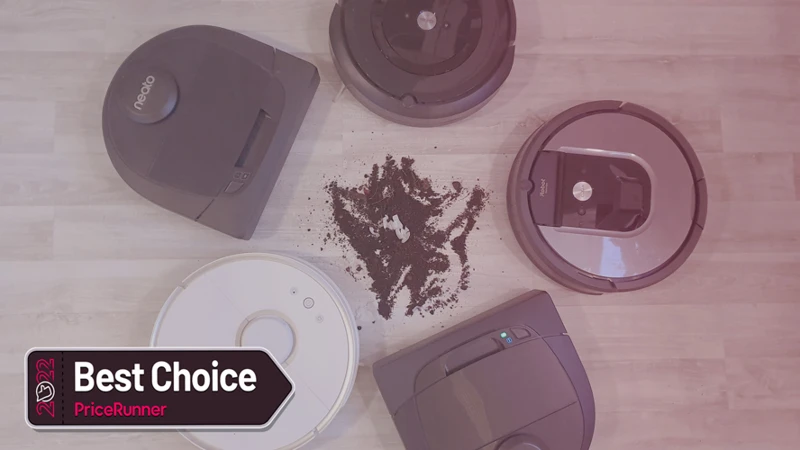
Robot vacuum cleaners have gained popularity over the years due to the convenience they offer in cleaning homes. Here are some popular robot vacuum cleaners and their features:
iRobot Roomba 960: This is a high-end robot vacuum cleaner that features advanced mapping technology, which scans and maps out the room to clean in an efficient manner. It has strong suction power, making it ideal for cleaning pet hair and other debris. It also has a long battery life that can last up to 75 minutes. This robot vacuum cleaner can be connected to your smartphone or Alexa, and can be controlled through voice commands.
Eufy RoboVac 11S: This robot vacuum cleaner is affordable and features strong suction power to clean floors and carpets. It is designed with an anti-scratch tempered glass cover and infrared sensor technology to move around and avoid obstacles. The battery life is long-lasting, making it easy to clean larger areas with one charge. It also comes with a remote control for easy management.
Shark ION Robot RV720: This robot vacuum cleaner is an affordable mid-range option. It has powerful suction, advanced mapping technology, and works well for cleaning pet hair. It also comes with a unique feature; an extendable brush that can clean edges and corners, as well as hard-to-reach spaces.
Xiaomi Mi Robot Vacuum: This robot vacuum cleaner is an affordable high-performance option. It has a strong suction power and comes with a laser room scanner that can create a virtual map of the room. The robot vacuum cleaner is designed with a large battery capacity that provides up to 2.5 hours of continuous cleaning. It can be controlled and scheduled through a mobile application and can be integrated with Alexa.
iLife A4s: This is another budget-friendly robot vacuum cleaner that features strong suction power and an auto-docking feature that can automatically recharge the robot vacuum cleaner. It has multiple cleaning modes, which include edge cleaning, spot cleaning, and automatic cleaning. The robot vacuum cleaner is designed with anti-collision and anti-drop sensors to navigate around obstacles, stairs, and other potential hazards.
These are just a few examples of popular robot vacuum cleaners on the market, each with their unique features and benefits. When choosing a robot vacuum cleaner, it is important to consider your specific needs and budget to find the best fit for you.
Popular Traditional Vacuum Cleaners and Their Features
Traditional vacuum cleaners have been around for several decades and come in different models, each with varying features to suit different cleaning needs. Here are some of the most popular traditional vacuum cleaners and their features:
Upright Vacuum Cleaners
Upright vacuum cleaners are the most commonly used traditional vacuum cleaners. They have a motor and suction head that are combined in one unit, making them easy to move around. Here are some of the features of upright vacuum cleaners:
– They are ideal for homes with carpets since they have a brush roll that agitates the carpet fibers, dislodging dirt and dust.
– Some models come with attachments for cleaning upholstery and hard floors.
– They are relatively affordable compared to other models.
– They have large dustbins, which means less frequent emptying.
– They are usually quite heavy, making them difficult to carry up stairs.
Canister Vacuum Cleaners
Canister vacuum cleaners are similar to upright vacuum cleaners but have a separate motor and suction head, connected by a hose. Here are some of the features of canister vacuum cleaners:
– They are more portable than upright vacuum cleaners and are easier to maneuver around furniture and corners.
– They are ideal for homes with hard floors and low-pile carpets.
– They are usually more expensive than upright vacuum cleaners.
– They have a smaller dustbin, which may require more frequent emptying.
– They can be quite noisy.
Stick Vacuum Cleaners
Stick vacuum cleaners are lightweight and cordless, making them ideal for quick cleanups or for people with small apartments. Here are some of the features of stick vacuum cleaners:
– They are very lightweight and easy to carry.
– They are ideal for small apartments or for cleaning up spills and messes.
– They are cordless, which makes them easy to move around.
– They have small dustbins, which may require more frequent emptying.
– They are not suitable for deep cleaning jobs.
Handheld Vacuum Cleaners
Handheld vacuum cleaners are the most portable of all traditional vacuum cleaners. They are small and lightweight and can be used to clean up messes in tight spaces. Here are some of the features of handheld vacuum cleaners:
– They are very lightweight and easy to carry.
– They are ideal for cleaning cars, upholstery, and tight spaces.
– They are very affordable and compact.
– They have small dustbins, which may require more frequent emptying.
– They are not suitable for deep cleaning jobs.
Each model of traditional vacuum cleaner has unique features that set them apart from each other. It is important to consider your cleaning needs and preferences before choosing the most suitable model.
Conclusion
As we come to the end of our Battle of Efficiency: Robot Vacuum Cleaners vs Traditional Vacuum Cleaners, it’s time to weigh the pros and cons of each type and determine which one is the superior choice for households. Choosing the right vacuum cleaner is crucial for keeping homes clean and healthy, and with so many options available in the market, it can be challenging to decide which one to go for. In this section, we will provide a comprehensive summary of the key differences between robot and traditional vacuum cleaners and outline the factors that should be considered before making a decision. So, let’s dive into the conclusion and find out which type of vacuum cleaner is the ultimate winner.
Summary of key differences and factors to consider
When considering whether to invest in a robot vacuum cleaner or a traditional vacuum cleaner, there are several key factors to take into account. Here is a summary of the key differences and factors to consider:
- Efficiency: Robot vacuum cleaners are great for maintaining clean floors with little effort on your part. They can clean every day and get into hard-to-reach places, but they may not be as powerful as traditional vacuum cleaners for deep cleaning.
- Noise level and energy consumption: Robot vacuum cleaners tend to be quieter and use less energy than traditional vacuum cleaners. They are also more convenient since they can be programmed to clean on a schedule, saving you time and effort.
- Cleaning power and performance: Traditional vacuum cleaners are generally more powerful and offer greater suction and cleaning capabilities. They are better for deep cleaning and can handle tougher messes, but they require more effort to use.
When deciding which type of vacuum cleaner to buy, it’s important to consider your household size and family members. If you have pets or children who make messes frequently, you may want to opt for a traditional vacuum cleaner with greater suction power. However, if you have a small household and want to save time and effort, a robot vacuum cleaner may be the right choice.
Another factor to consider is your cleaning needs and surfaces. If you have a lot of carpeted areas, you may want to opt for a traditional vacuum cleaner with a beater bar or brush roll. However, if you have mostly hard floors like tile or hardwood, a robot vacuum cleaner can easily navigate those surfaces without damaging them.
Lastly, price and maintenance should also be considered. Traditional vacuum cleaners tend to be less expensive initially, but they do require replacement bags and filters over time. Robot vacuum cleaners usually have a higher up-front cost but don’t require as much maintenance.
Both robot vacuum cleaners and traditional vacuum cleaners have their pros and cons, and the best choice will depend on your specific needs and preferences. It’s important to weigh all of the factors before making a final decision.
Final verdict which type of vacuum cleaner is more efficient
After considering all the factors, it can be difficult to determine which type of vacuum cleaner is more efficient. However, based on the comparison of robot vacuum cleaners vs traditional vacuum cleaners, it can be stated that both have their own advantages and disadvantages.
Robot vacuum cleaners may seem like the most convenient option as they require less human intervention, are more energy-efficient, and do not produce as much noise as traditional vacuum cleaners. Additionally, their compact design allows them to clean hard-to-reach areas, such as under furniture or inside tight spaces.
Traditional vacuum cleaners, on the other hand, have the advantage of having powerful suction, making them more efficient at cleaning carpets and removing pet hair. They also tend to have larger dirt collectors than robot vacuum cleaners, which means they can hold more dirt and debris before requiring to be emptied.
In the end, the choice between the two types of vacuum cleaners ultimately depends on individual needs and preferences. If you have a larger household with more family members and pets, a traditional vacuum cleaner may be the way to go. However, if you have a smaller home or apartment and simply do not have the time or interest in cleaning, a robot vacuum cleaner may be the better choice.
No matter which type of vacuum cleaner you choose, it is essential to select the one that suits your specific needs and provides the most efficient cleaning for your home. Additionally, it is crucial to regularly maintain and clean your vacuum cleaner to ensure its longevity and optimal performance.
Frequently Asked Questions
1. Are robot vacuum cleaners better than traditional vacuum cleaners?
It depends on your cleaning needs and preferences. Both types of vacuum cleaners have their unique advantages and disadvantages.
2. Do robot vacuum cleaners have the same cleaning power as traditional vacuum cleaners?
Robot vacuum cleaners may not have the same suction power as corded traditional vacuum cleaners, but they can still clean most surfaces effectively.
3. How long do robot vacuum cleaners last?
A well-maintained robot vacuum cleaner can last anywhere from 3 to 5 years.
4. How often do I have to empty the dustbin on a robot vacuum cleaner?
It depends on how often you use the robot vacuum cleaner and the size of the dustbin. Generally, you may need to empty the dustbin after every use or every few days.
5. Can I use a robot vacuum cleaner on stairs?
No, most robot vacuum cleaners are not designed to be used on stairs. They are best suited for flat surfaces.
6. Do traditional vacuum cleaners have better filtration?
Traditional vacuum cleaners typically have better filtration systems that can trap small particles like pollen and pet dander.
7. How much noise do robot vacuum cleaners make?
Most robot vacuum cleaners have low noise levels, typically around 55 decibels, which is equivalent to a quiet conversation.
8. Can traditional vacuum cleaners clean carpets better than robot vacuum cleaners?
Traditional vacuum cleaners may have better suction power and be more effective on deep carpets, but some high-end robot vacuum cleaners also have strong suction and can clean carpets effectively.
9. Are robot vacuum cleaners more expensive than traditional vacuum cleaners?
Generally, robot vacuum cleaners are more expensive than traditional vacuum cleaners, but it depends on the model and features.
10. Can I schedule cleaning times for my robot vacuum cleaner?
Yes, most robot vacuum cleaners come with scheduling features that allow you to set cleaning times and frequencies.

